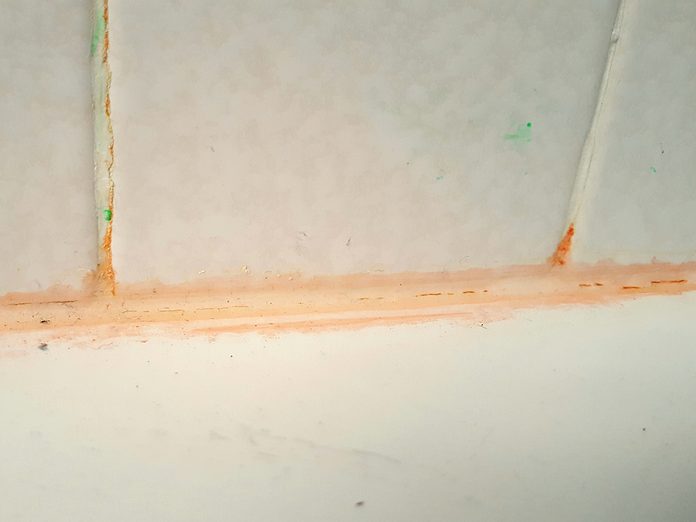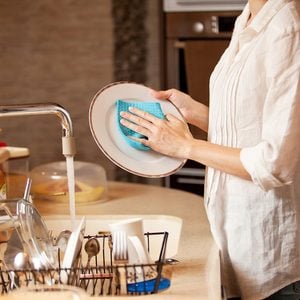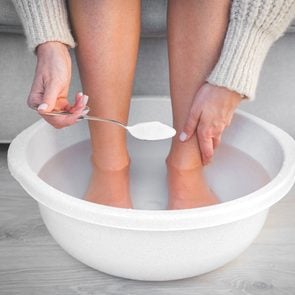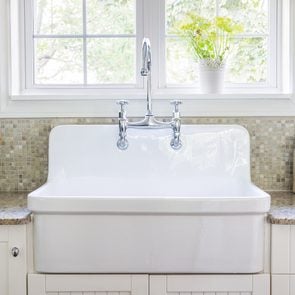What is That Pink Slime in Your Bathroom?

Get the scoop on so-called pink mould, the icky shower slime that seems to return as soon as you finish cleaning the bathroom.
You stay on top of your bathroom cleaning routine, yet icky slime, in shades of pink, still lurks in your shower. What is it—pink mould, orange mildew, red fungus? And more important, how can you put a stop to this goo?
Don’t be embarrassed. Every bathroom has seen its share of unsightly substances. Here is the scoop on exactly what this shower slime is, how to remove it and ways to prevent it from returning—with the least amount of effort.
What is that pink gunk in your shower?
It may be commonly called pink mould, but this gross slime isn’t really mould at all. “The pink gunk is really an airborne bacterium called Serratia marcescens,” says Steve Stephenson, PhD, a researcher in the Department of Biological Sciences at the University of Arkansas who wrote not one but three books on slime moulds.
And while people may casually call the gunk “pink mould,” the bacteria can take a range of shades—from pink to orange to red—depending on bathroom conditions like temperature, humidity levels and sunlight.
What causes pink mould in the shower?
Before you start worrying that you’ve done something wrong, know that pretty much everyone has encountered the unappealing slime at some point or another. “It would not be uncommon to find S. marcescens in the bathroom,” says Stephenson. After all, it thrives in moist environments like—you guessed it—your shower.
These bacteria live on a diet of minerals and fats. With the mineral deposits in soap scum and fats found in shampoo residue, your shower is a buffet for these little guys. They love to hide in grout lines, caulk crevices and around shampoo bottles.
Is pink mould harmful?
Unlike toxic black mould that can cause health concerns, pink mould in the shower isn’t a concern for the average person with a healthy immune system. But it’s still gross, and under the right conditions, the colony will continue to flourish, exposing you to even more spores.
It’s better to be safe than sorry, especially if you have a compromised immune system. So if you see it, scrub it. (Here’s how to boost your immune system, naturally.)
How do you get rid of pink mould?
Good news: It won’t take a lot of effort to wipe out the pink mould in your bathroom. You can use a specialty cleaning product to work the buildup from your shower. But there are homemade options that’ll do the trick too.
Vera Peterson, president of Molly Maid, prefers a paste made from items you probably have on hand. Simply mix four parts baking soda with one part liquid dish soap. Common pantry ingredients make this DIY solution one of the best eco-friendly bathroom cleaning products. And as an added bonus, making your own shower scrub will save you money.
Using the paste is also easy. Apply it to your shower, wait 10 minutes and then (wearing cleaning gloves to protect your hands) scrub away the pink residue . Finish by drying the shower completely with a fresh microfibre cloth. (Leave it damp, and the dreaded pink slime will return.)
How do you prevent pink mould?
To win the battle against pink mould, you don’t have to give up your hot shower or steamy bath. Try these techniques to banish pink mould in the shower forever—or at least give you a little more time before the bacteria set up house again.
Ventilate
Use the exhaust fan for 30 minutes after showers. If you don’t have an exhaust fan, try a small, battery-operated desk fan to get the air moving. Stephenson says the best defense against pink mould is keeping moisture levels down as much as possible. But it is a bathroom with, well, lots of water. So you may need to try other solutions as well.
Squeegee
After every shower, squeegee the walls and, if you have them, glass doors. Or try Peterson’s suggestion to prevent buildup: Spritz a leave-on commercial shower spray when you get out of the shower.
Dry
Between grout scrubbings and deep cleanings, wipe away soap and shampoo residue everywhere it collects. Don’t forget to dry surfaces!
Go antimicrobial
Invest in quick-dry bath mats and shower curtain liners with antibacterial properties. And when laundering machine-washable curtains and liners, toss in a few old towels. They act as scrubbers to help lift away soap scum and mildew.
Declutter
Shampoo and body wash bottles left in the shower are cumbersome to clean around and are an open invitation to bacteria and mould.
Next, check out 13 cleaning hacks that take the hassle out of housekeeping.






